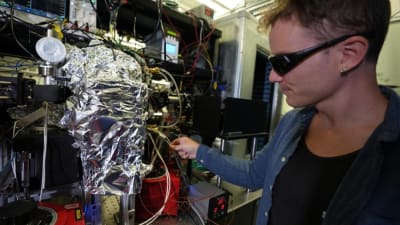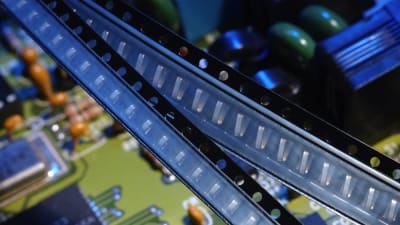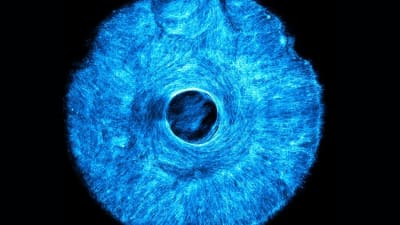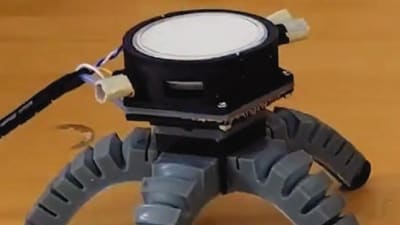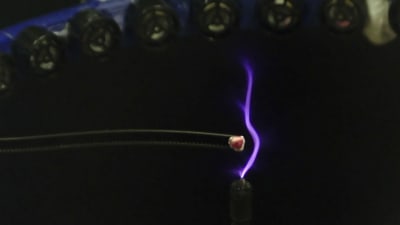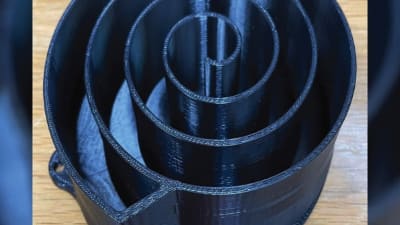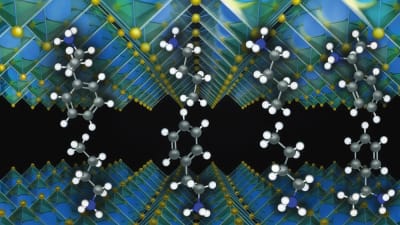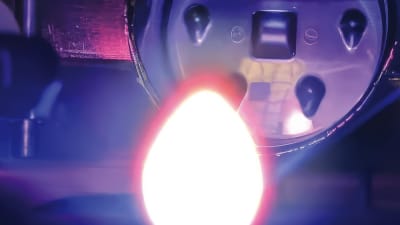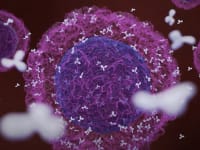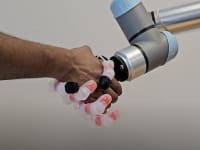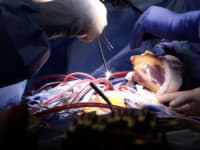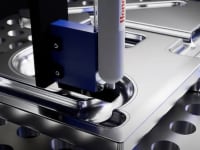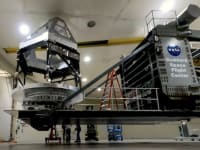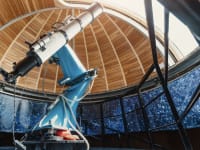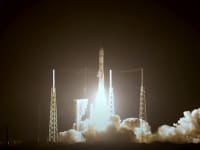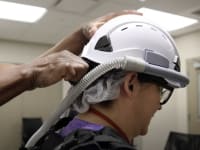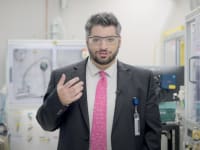Stories
6
61
-1
60
30
INSIDER: Sensors/Data Acquisition
Scientists at the National Institute of Standards and Technology (NIST) have created a new thermometer using atoms boosted to such high energy levels that they are a thousand...
Products: Physical Sciences
See what's new on the market, including Endress+Hauser's FMR63B 80 GHz radar level sensor; the TP-108 Series, the smallest of all test points from Components Corporation; Sumida America's family of Resin-Shielded Surface-Mount Power Inductors; Coilcraft's XGL3020 series of ultra-low loss power inductors; Yokogawa Electric Corporation's OpreX™ Intelligent Manufacturing Hub; and much more.
Briefs: Materials
An innovator at NASA Langley Research Center has developed a novel method for making thin, lightweight radiation shielding that can be sprayed or melted onto common textiles used in clothing such as cotton, nylon, polyester, Nomex, and Kevlar. Read on to learn more about it.
INSIDER: Electronics & Computers
As more satellites, telescopes, and other spacecraft are built to be repairable, it will take reliable trajectories for service spacecraft to...
INSIDER: Manufacturing & Prototyping
An electrospray engine applies an electric field to a conductive liquid, generating a high-speed jet of tiny droplets that can propel a spacecraft. These miniature engines are...
Blog: Manufacturing & Prototyping
A team has developed a method to grow artificial muscle tissue that twitches and flexes in multiple coordinated directions. As a demonstration, they grew an artificial, muscle-powered structure that pulls both concentrically and radially.
Quiz: Physical Sciences
How much do you know about animal-inspired technology? Test your knowledge with this quiz.
Blog: Physical Sciences
This device works to suppress flames using the power of conductive aerosols, small particles that can direct electricity.
INSIDER: Power
Oxide-ion conductors enable oxide ions (O2-) to be transported in solid oxide fuel cells (SOFCs), which can run on diverse fuels beyond hydrogen, including natural gas,...
INSIDER: Design
As population growth and extreme temperatures strain the United States power grid, utilities and equipment manufacturers are looking for ways to increase the amount of...
INSIDER: Electronics & Computers
Researchers at the University of Minnesota have achieved a new material that will be pivotal in making the next generation of high-power electronics...
Briefs: Physical Sciences
Jamie Paik and colleagues in the Reconfigurable Robotics Lab in EPFL’s School of Engineering have developed a sensor that can perceive combinations of bending, stretching, compression, and temperature changes, all using a robust system that boils down to a simple concept: color. Read on to learn more about it.
Briefs: Physical Sciences
In creating a pair of new robots, Cornell researchers cultivated an unlikely component: fungal mycelia. By harnessing mycelia’s innate electrical signals, the researchers discovered a new way of controlling “biohybrid” robots that can potentially react to their environment better than their purely synthetic counterparts. Read on to learn more.
INSIDER: Physical Sciences
DNA-nanoparticle motors are exactly as they sound — tiny artificial motors that use the structures of DNA and RNA to propel motion by enzymatic RNA degradation. Essentially,...
Blog: Design
Researchers have uncovered a way of transporting electricity through air by ultrasonic waves. The level of control of electric sparks enables them to be guided around obstacles, or to hit specific spots, even into non-conductive materials.
INSIDER: Electronics & Computers
The electronics industry is approaching a limit to the number of transistors that can be packed onto the surface of a computer chip. So, chip manufacturers are looking to build up rather than out.
Briefs: Physical Sciences
Researchers have designed a way to levitate and propel objects using only light by creating specific nanoscale patterning on the objects' surfaces. The work could be a step toward developing a spacecraft that could reach the nearest planet outside of our solar system in 20 years, powered and accelerated only by light. Read on to learn more.
Briefs: Physical Sciences
NASA Kennedy Space Center engineers developed a Cryogenic Oxygen Storage Module to store oxygen in solid-state form and deliver it as a gas to an end-use environmental control and/or life support system. Read on to learn more about it.
Briefs: Materials
MIT engineers have shown they can prevent cracks from spreading between composite’s layers, using an approach they developed called “nanostitching,” in which they deposit chemically grown microscopic forests of carbon nanotubes between composite layers. Read on to learn more about it.
Briefs: RF & Microwave Electronics
A future quantum network may become less of a stretch thanks to researchers at the Argonne National Laboratory, the University of Chicago, and Cambridge University. By “stretching” thin films of diamond, they created quantum bits that can operate with significantly reduced equipment and expense. Read on to learn more.
Briefs: Electronics & Computers
Researchers have demonstrated the ability to engineer materials that are both stiff and capable of insulating against heat. This combination of properties is extremely unusual and holds promise for a range of applications, such as the development of new thermal insulation coatings for electronic devices. Read on to learn more.
Briefs: Mechanical & Fluid Systems
NASA’s Cryogenic Flux Capacitor capitalizes on the energy storage capacity of liquefied gases. By exploiting a unique attribute of nano-porous materials, aerogel in this case, fluid commodities such as oxygen, hydrogen, methane, etc. can be stored in a molecular surface-adsorbed state. Read on to learn more.
Blog: Materials
A team of scientists has created a new shape-changing polymer that could transform how future soft materials are constructed.
Application Briefs: Materials
Defense applications, in particular, are always tasked with the balancing act that optimizes size, weight, power, and cost (SWaP-C) efficiencies when specifying new equipment. The challenge is how to balance beneficial trade-offs for optimal performance. Read on to learn more.
Briefs: Physical Sciences
Want to create a zone of minimum radiation and magnetic/plasma effects for spacecraft? Then read on to find out how!
Articles: Software
Scientists from MIT and elsewhere have demonstrated a fully integrated photonic processor that can perform all the key computations of a deep neural network optically on a chip. Read on to learn more about it.
Briefs: Materials
Researchers have fabricated the world’s highest-performing HTS wire segment while making the price-performance metric significantly more favorable. Read on to learn more.
Briefs: Electronics & Computers
Researchers have developed a new soft robot design that engages in three simultaneous behaviors: rolling forward, spinning like a record, and following a path that orbits around a central point. The device, which operates without human or computer control, holds promise for developing soft robotic technologies that can be used to navigate and map unknown environments. The new soft robots are called twisted ringbots. Read on to learn more about them.
INSIDER: Electronics & Computers
Researchers have demonstrated a new technique for self-assembling electronic devices. The proof-of-concept work was used to create diodes and transistors and paves the way for...
Top Stories
Blog: Manufacturing & Prototyping
2025 Holiday Gift Guide for Engineers: Tech, Tools, and Gadgets
INSIDER: Research Lab
Scientists Create Superconducting Semiconductor Material
Blog: Software
Quiz: Materials
Blog: Aerospace
Tech Briefs Wrapped 2025: Top 10 Technology Stories
Blog: Manufacturing & Prototyping
Webcasts
 Upcoming Webinars: AR/AI
Upcoming Webinars: AR/AI
The Real Impact of AR and AI in the Industrial Equipment Industry
 Upcoming Webinars: Motion Control
Upcoming Webinars: Motion Control
Next-Generation Linear and Rotary Stages: When Ultra Precision...
 Upcoming Webinars: Energy
Upcoming Webinars: Energy
Hydrogen Engines Are Heating Up for Heavy Duty
 Podcasts: Medical
Podcasts: Medical
How Wearables Are Enhancing Smart Drug Delivery
 Podcasts: Power
Podcasts: Power
SAE Automotive Podcast: Solid-State Batteries


